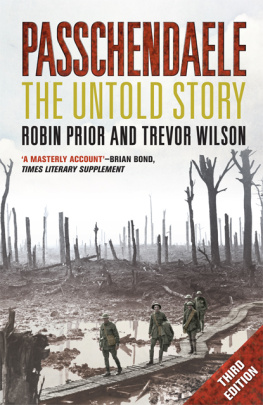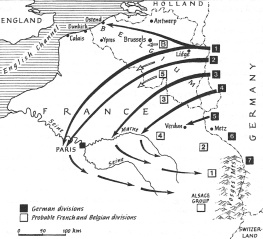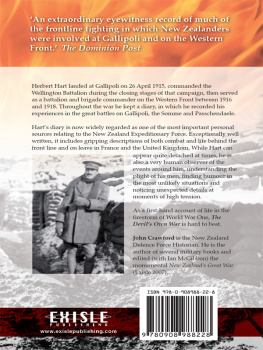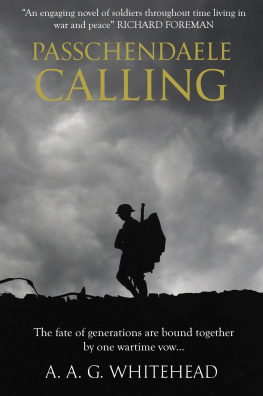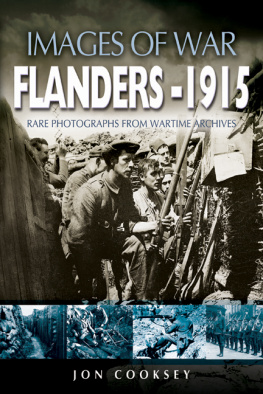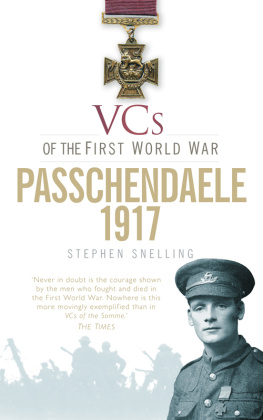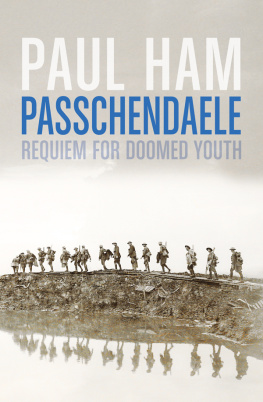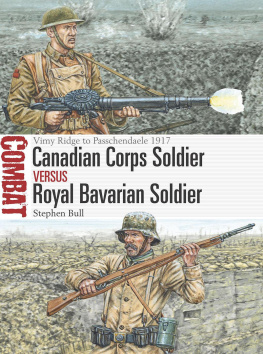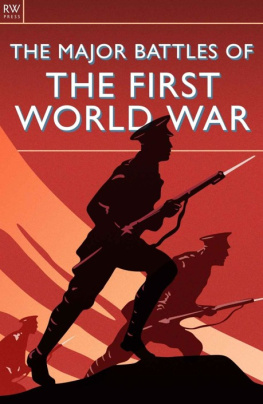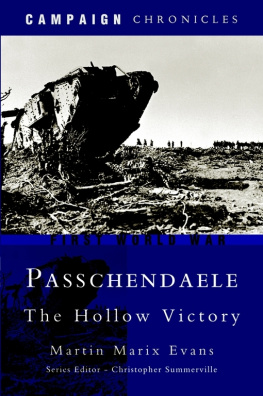More praise for
Passchendaele: The Untold Story
[An] extraordinary investigation of Sir Douglas Haig's ruinous Third Ypres campaign of 1917. This is the most wide-ranging and perceptive account of Passchendaele yet written. [This] book not only captures the agony of the soldiers' war but, in the measured, understated tone of the best prosecutors, leads us to inevitable conclusions.
Robert Cowley, Military History Quarterly
A monument to scholarship, economical and often eloquent writing, and a solid grasp of the real issues involved in World War I. This is a great book. It is a book that every marine who aspires to higher command should add to his or her libraryone that will undoubtedly reward its owner by rereading and rereading.
Williamson Murray, Marine Corps Gazette
Without a doubt the best book on the campaign yet published. It is well-researched, well-written, and will keep historians arguing for years to come.Stand To
Prior and Wilson, both distinguished historians, have conducted extensive primary research to provide an account at once both provocative and authoritative.Choice
The authors should be commended for writing a balanced, convincing work that reveals the devastation of the First World War and the failure of military and political leaders to recognize this horror.Virginia Quarterly Review
Passchendaele
Robin Prior is professor of history at Flinders University. Trevor Wilson is professor emeritus of history at the University of Adelaide. They are the authors of The Somme, also published by Yale, among numerous other publications.
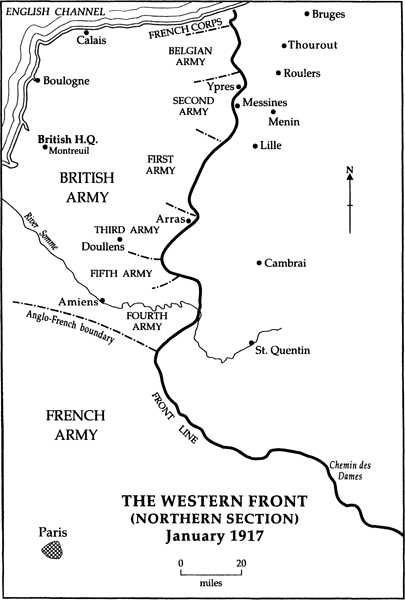

Hardcover edition published by Yale University Press in 1996.
First published as a Yale Nota Bene book in 2002.
This edition first published in 2016.
Introduction to the third edition copyright 2016 by Robin Prior and Trevor Wilson.
Introduction to the second edition copyright 2002 by Robin Prior and Trevor Wilson.
Hardcover edition copyright 1996 by Robin Prior and Trevor Wilson.
All rights reserved. This book may not be reproduced, in whole or in part, including illustrations, in any form (beyond that copying permitted by Sections 107 and 108 of the U.S. Copyright Law and except by reviewers for the public press), without written permission from the publishers.
For information about this and other Yale University Press publications, please contact:
U.S. Office
Europe Office
Printed and bound by Hobbs the Printer Ltd, Totton, Hampshire
Library of Congress Control Number: 2001098705
ISBN: 978-0-300-22121-3 (pbk)
A catalogue record for this book is available from the British Library.
10 9 8 7 6 5 4 3 2 1
For Heather
and for Ray and Janet
RP
For Nirej
and for Travis
and for Craig
and for young Lucy
Best of friends
TW
Contents
Illustrations
Between pages 92 and 93
The Commanders
The Role of Artillery at Third Ypres
Messines
31 July 1917
The August Battles
Plumer's Successes
The Final Battles
Maps
Acknowledgements
The authors wish to thank their colleagues in the History Departments at the Australian Defence Force Academy and the University of Adelaide for support and encouragement during the preparation of this book. They also wish to acknowledge the assistance of the libraries of those institutions, the Bridges library and the Barr Smith library. For preparation of the maps included here, they owe a profound debt to Keith Mitchell of the Cartography Department, Research School, Australian National University. For preparation of the manuscript, they are grateful to the following: Christine Kendrick, Julie McMahon, Marion Pearce, and Elsa Sellick. For meticulous research in a variety of archives, they wish to acknowledge great assistance from Irene Cassidy in England and from Elizabeth Greenhalgh and Helen Boxall in Australia. The research staff at the following institutions have enabled the authors to make use of their rich and varied archives: the Imperial War Museum, London, Australian War Memorial, the Public Record Office, the Liddell Hart Centre at King's College, London, and the Royal Artillery Institution Library, Woolwich. And for kind permission to reproduce the illustrations, the authors would like to thank the Imperial War Museum, London. Finally, the authors are greatly in the debt of Robert Baldock of Yale University Press for his enthusiasm regarding this project, and to the staff of the London branch of Yale University Press for so expeditiously converting the manuscript into a book.
Introduction to the Third Edition
It is twenty years since the first publication of our book about the British army and the Passchendaele campaign, formally called the Third Battle of Ypres, and it is fifteen years since the second edition appeared. Despite the flood of books on the First World War published during the interim, none that we have seen deals with the entire campaign in both its military and political dimensions, although some studies have focused on aspects of the battle.
It might be useful, therefore, to restate the book's main arguments before turning to the other literature that has appeared in order to see how or if it might modify some of those arguments.
The first of our contentions is that the British army was, in the second half of 1917, better placed to conduct offensive operations on the Western Front than on any previous occasion. Partly, this situation had come about because of the enormous productive capacity of the British Ministry of Munitions. Whereas during the Somme campaign in 1916 only a handful of the array of guns had been heavy enough to ensure comprehensive trench destruction, at Passchendaele no fewer than 750 heavy guns were available. Moreover, these guns had a plentiful supply of shells to fire at the German defences.
There were other factors that should have worked to the advantage of the British. During the Somme campaign it had been discovered that a curtain of artillery shells fired immediately in front of the advancing infantry was useful in neutralising the German machine gunners who had taken such a fearful toll on the infantry on the first day. By the end of July 1916, the creeping barrage, as it was called, was in general use in all infantry attacks. Further refinements had taken place during the campaigns at Arras and the Vimy Ridge, where it had been realised that if the barrage was slowed and made thicker by firing more shells, it wrought more havoc on the enemy and gave British soldiers a better chance of keeping up with its rate of advance, thereby offering more protection.
Since the Somme there had also been some advances in artillery accuracy. A method of detecting the location of distant German guns, called sound ranging, was starting to be used and the various meteorological factors that affected the flight of a shell, such as air temperature and wind speed, were noted with greater regularity. Matters such as the wear on the rifling of a gun and an accurate measure of the weight of each shell being fired also aided accuracy. By mid-1917 there was certainly a greater chance that a shell would hit the target at which it had been aimed.
The Somme saw another innovation in the form of the tank. This weapon was first used on 15 September, and although it did not lead to spectacular successes, at least, when the going was good, it did allow the infantry to make gains at modest cost. The tanks certainly startled the German defenders whom they bore down upon and at times caused to panic. Although the mechanical unreliability of the vehicles and their inability to manoeuvre over rough ground limited their effectiveness, in 1917 a new model tank, the Mark IV, offering greater reliability, became available.
Next page
